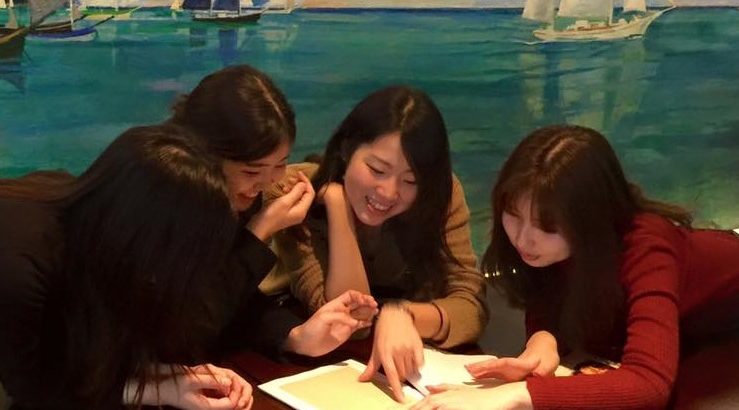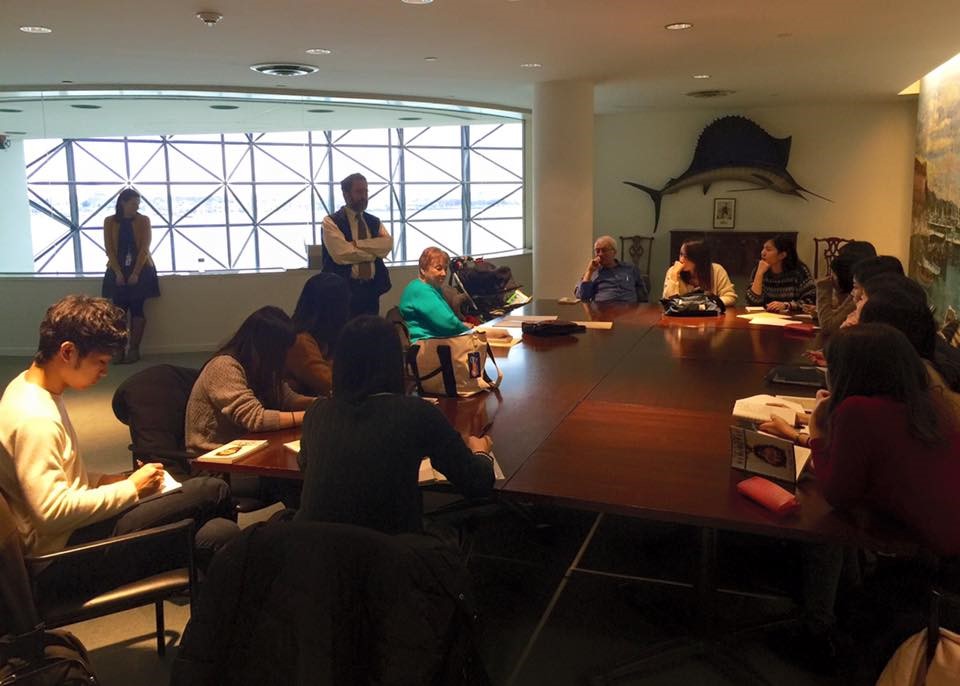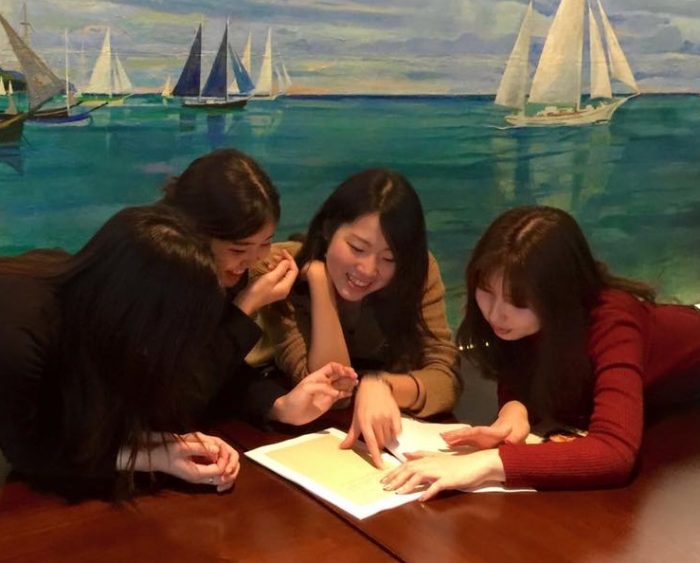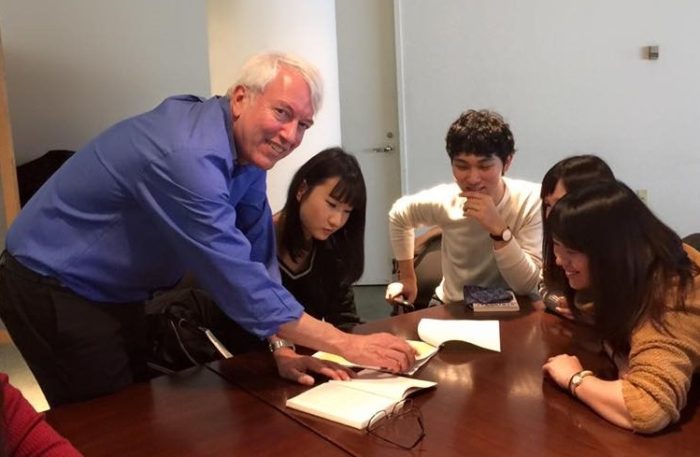by Stephen Plotkin, Textual Collections Archivist
One of the best things about working in research is having somebody whom you first knew as a hard-working student come back as a full-fledged professional scholar. Professor Kaori Sugimoto Fairbanks first came to visit the Ernest Hemingway Collection at the John F. Kennedy Presidential Library in 2000. During that visit and several subsequent ones, she pored over manuscripts, transcribing lengthy passages, on her way to writing a dissertation about Hemingway’s later works.
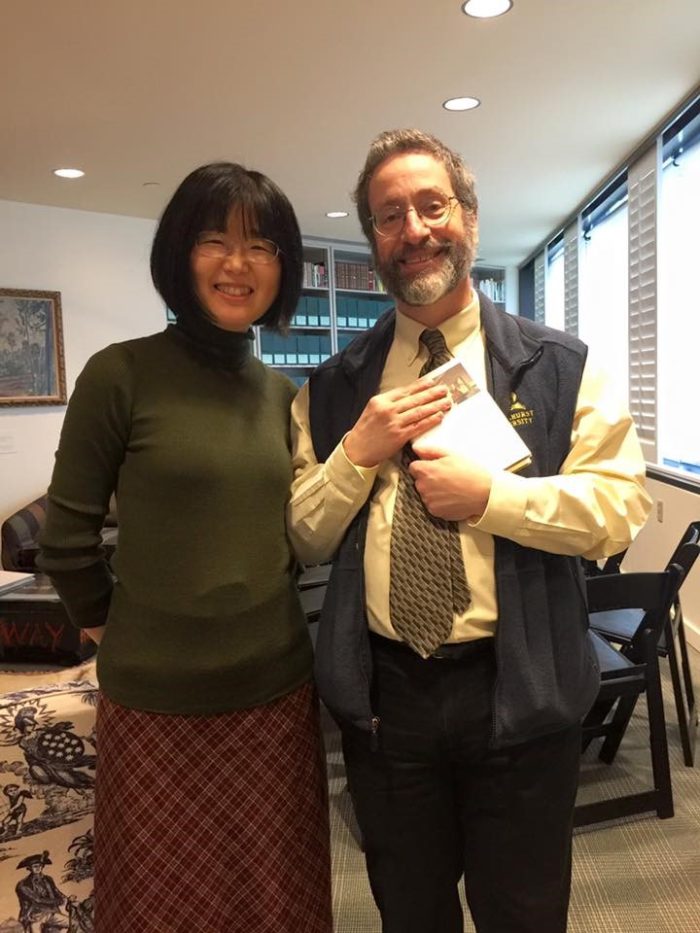
Prof. Kaori Sugimoto Fairbanks and Archivist Stephen Plotkin in the Kennedy Library Hemingway Room, February 2016.
This past winter, Professor Fairbanks returned with a copy of her newly-published book on the posthumous works of Hemingway. Better yet, she brought her class from Bunkyo Gakuin University, where she is on the faculty, to visit the Hemingway Collection and to work with the Hemingway manuscripts.
Professor Fairbanks’s students had read Hemingway’s story “Indian Camp” as part of their seminar at Bunkyo Gakuin. While they were visiting the Hemingway Collection, she had them study his original beginning to the story, which he had ultimately deleted, although he had saved it as he had saved so many of his other manuscripts.
The rejected beginning attained a new life when Hemingway scholar and editor Philip Young published it under the title “Three Shots” in the posthumous collection The Nick Adams Stories.
(Below) Professor Fairbanks’s colleague, Professor Robert van Benthuysen, assists some students with a puzzling Hemingway manuscript item.
The students selected manuscripts based on their personal interests. Of course, as is traditionally the case, research was conducted with reference copies of the original manuscripts.
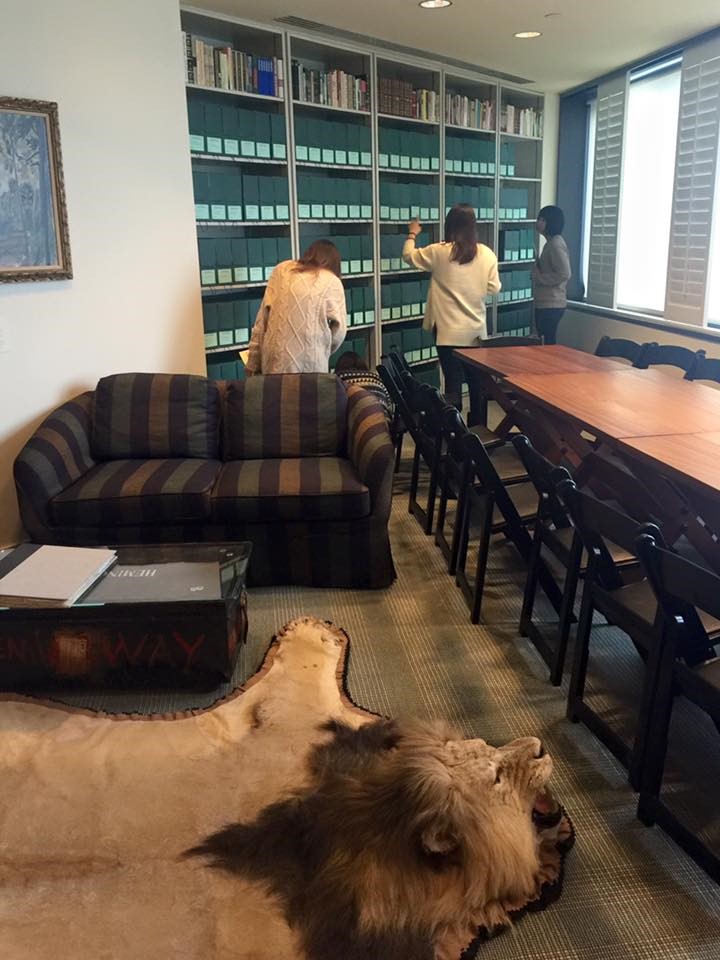
Students reviewing the Hemingway Collection (reference-copied version) in the Hemingway Room, February 2016.
